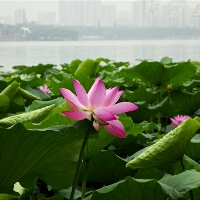The professional code of beekeeping and bee product processing is: 510313
Beekeeping and bee product processing courses
Food biochemistry, bee biology, bee feeding management, bee pathology, honey powder source botany, bee product processing, bee product quality control, bee industry economic management, etc.
Professional use of beekeeping and bee product processing
Beekeeping and bee product processing mainly study the basic knowledge and skills in bee breeding, bee disease prevention, bee product processing and testing, and carry out bee production, bee disease prevention and control, bee product raw materials, semi-finished products, finished products for inspection and testing, bee product production, operation and management. For example, bee breeding, paralysis and sporidiosis prevention, adjustment of production and processing parameters of propolis, honey and other products, quality inspection and management of bee products, etc. Key words: bee propolis bee products
Apiculture and bee product processing course
Bee Feeding Management Technology, Bee Product Processing Technology, Bee Raising Machine Processing Technology, Food Quality and Safety Control Technology, Food Physicochemical Testing Technology, Food Quality and Safety Control Technology, Food Packaging Technology, Food Processing Machinery and Equipment, Food Nutrition and Hygiene, Food Additive Application and Detection Technology
Professional explanation of beekeeping and bee product processing
Three years of basic schooling
Training objectives
This major cultivates all-round development of morality, intelligence, physique and beauty, has good professional ethics and humanistic quality, master the basic knowledge of beekeeping production, bee disease prevention, bee product processing and detection, have the ability of bee farm construction and organization management, bee product processing and development, trade and operation, and engage in bee product processing technology and design, bee product production, operation and management High quality technical talents engaged in bee product sales and other work. Employment orientation
Mainly for bee product processing and circulation, food processing and pharmaceutical enterprises, engaged in bee product processing and quality control, bee product technology development, business management and sales in bee product processing and inspection, bee product quality control, bee product sales and management and other post groups.
Main professional ability
1. Have the ability to learn new knowledge and skills and the ability to innovate and start businesses;
2. Master the basic knowledge of bee feeding and management, and have the ability of bee production, bee farm construction and organization management, genetic breeding and bee disease prevention;
3. Master the basic theory and key technology of bee product processing and R&D, and have the technical guidance ability of bee product processing and R&D;
4. Master the basic knowledge of bee product detection and analysis, and have the ability to control the quality of bee products;
5. Master the main types and basic principles of bee product processing machinery and equipment, and have the ability to design, build, use and maintain the facilities and equipment required for bee product processing;
6. Master the basic theory of bee industry economic management, and have the ability to trade and operate modern bee products;
7. Understand the basic knowledge of e-commerce of agricultural products, and have the basic skills of online sales.
Core Courses and Practice
1. Core courses
Food biochemistry, bee biology, bee feeding management, bee pathology, honey powder source botany, bee product processing, bee product quality control, bee industry economic management, etc.
2. Practical training
Practical training on food biochemistry, bee feeding management technology, bee product processing technology, bee product quality control, etc. will be carried out in the school.
Internship in bee product enterprises, bee farms, bee research institutes and other enterprises and institutions.
Examples of professional qualifications
Raw material purchaser, food safety engineer, food inspector
Examples of connecting secondary vocational specialties
Preservation and processing of special animal breeding agricultural products
Examples of continuing undergraduate majors
Apiology
Apiculture and employment direction of bee product processing
Bee enterprises: bee breeding, bee disease prevention, bee product raw materials, semi-finished products, finished product processing and inspection, bee product R&D and design, bee product quality and safety supervision, bee product sales and management.

